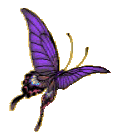Oklahoma Cemeteries Website
Click
here
to break out of frames
This information is available for free.
If you paid money for a
subscription to get to this site, demand a refund.
| Thomas Blindwoman |
| © Kingfisher Free Press |
| 03 Jun 1926 |
| Submitted by: Mollie Stehno |
Hero of WW I, Loses In Battle With Death
Tommy Blind Woman, who proudly bore the reputation of being the first American Indian across the Rhine in the World war is dead. Tommy went to the Happy Hunting Grounds last Thursday at two o'clock, at his home seven miles west of Kingfisher. After spending three weeks in the local hospital receiving treatment for erysipelas, he returned to his home. Four days later he contracted pneumonia and in three days he was dead.
Thomas Blind Woman enlisted as a private of the first class in Company H. 39th Infantry, 4th Division, on February 27th, 1918, at Camp Greene, N. C. He was discharged August 15, 1919, at Camp Pike, Arkansas, returning at once to his home here. His age at enlisting was twenty-seven years.
He was in the Aisne-Marne, St. Michael, Meuse-Argonne, and Vesie sectors in the A. E. F. from July 5, 918, until the end of the hostilities. He served as an infantry scout in most engagements, having a natural ability to make his way among the enemy unnoticed.
He was in the service a year and five months, spending the time between May 10, 1918, and August 6, 1919, in the American Expeditionary Forces
Because of his ability as a soldier and a scout, and of his valor and courage in action and under fire, Blind Woman received the highest honor the United States, can bestow upon a warrior, a Congressional medal of Honor. His most notable deed was the capture of seven of the enemy entrenched in a shell hole with machine guns. Nine men were detailed to rout them, but Tommy was the only one of the nine who got there, the other either being killed or wounded in the effort. On is return from Europe, this Kingfisher Indian was heralded by leading newspaper of the nation as one of the greatest heroes of the war. The rifle with which he so successfully combated the enemy was placed in the New York Historical Society, but it is believed that it has since been removed to Washington, D. C.
While living, many were the interesting stories he could tell of the long period spent in the most dangerous place on earth at that time. Once he saved his life by rolling together two dead men on the battlefield as a breastwork to protect him from the leaden barrage of the opposing forces.
He personally viewed death when he was discovered in No Man's Land. For days at time he was in the trenches, and although never flinching under any circumstances of showing any desire to retreat, he frankly admitted that there were times that a man just couldn't help being "scared."
Blind Woman was a well educated Indian, having attended the local high school and college, as well as state school maintained especially for his race. He showed true Indian brevity when he penned this letter to his friend. Arthur Bracken, immediately upon landing in France, "Dear Art; You're there and I'm here. Good-bye."
The deceased leaves a wife, Alice Timber Woman, and two children, Virginia and Yellow Horse. Also, an uncle, Fighting Bull; and a half brother, George Eagle Nest of near El Reno; and other relatives.
By the Indians, Blind Woman was known as "Bee," having been dubbed as such because of his ability to "sting" the enemy with cold American steel in breaking up counter attacks.
|Ba - Bm Surnames Kingfisher Cemetery Page| | |Kingfisher Cemetery Page| |Kingfisher County Cemetery Page| |Home|
[an error occurred while processing this directive]





